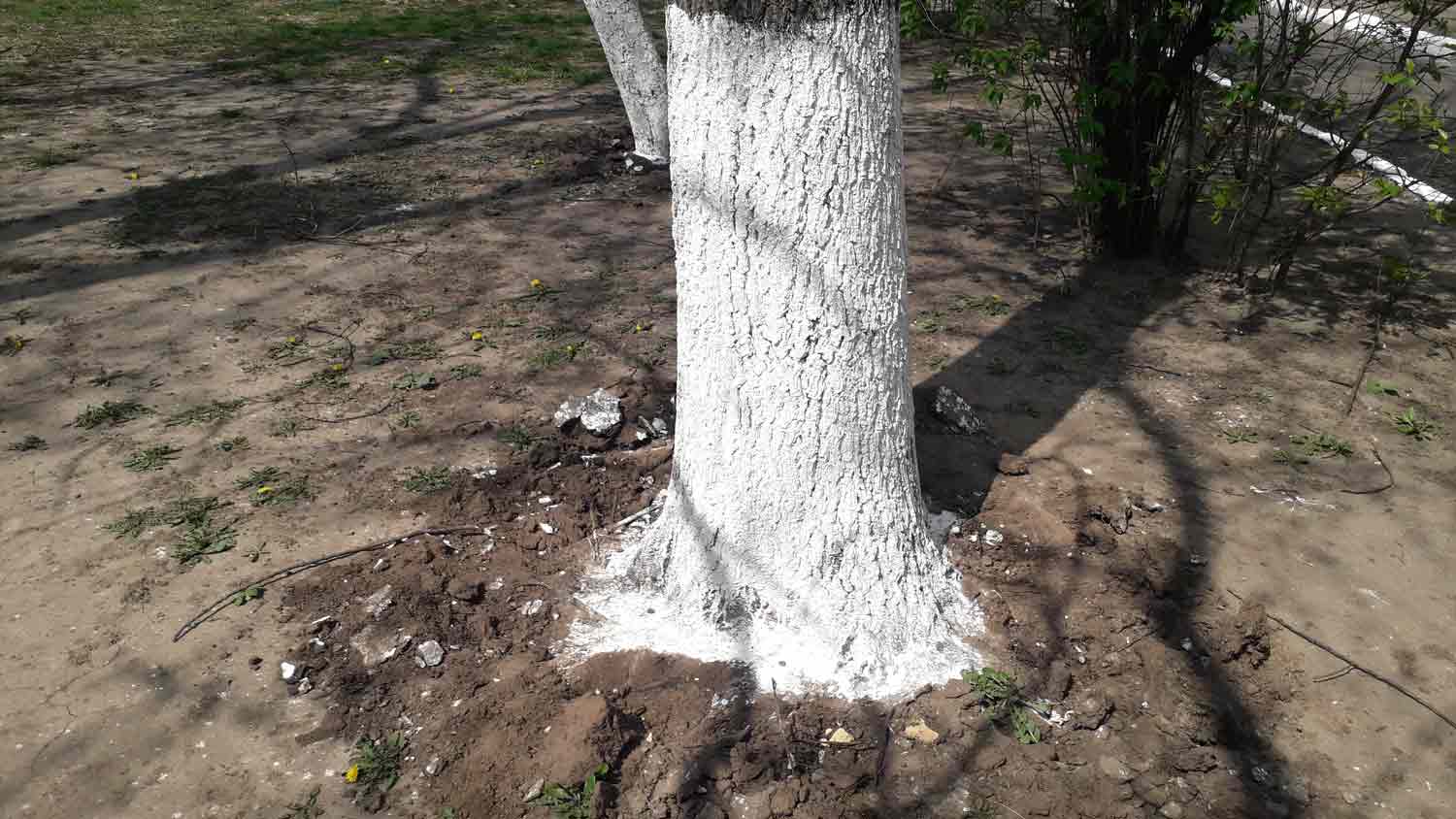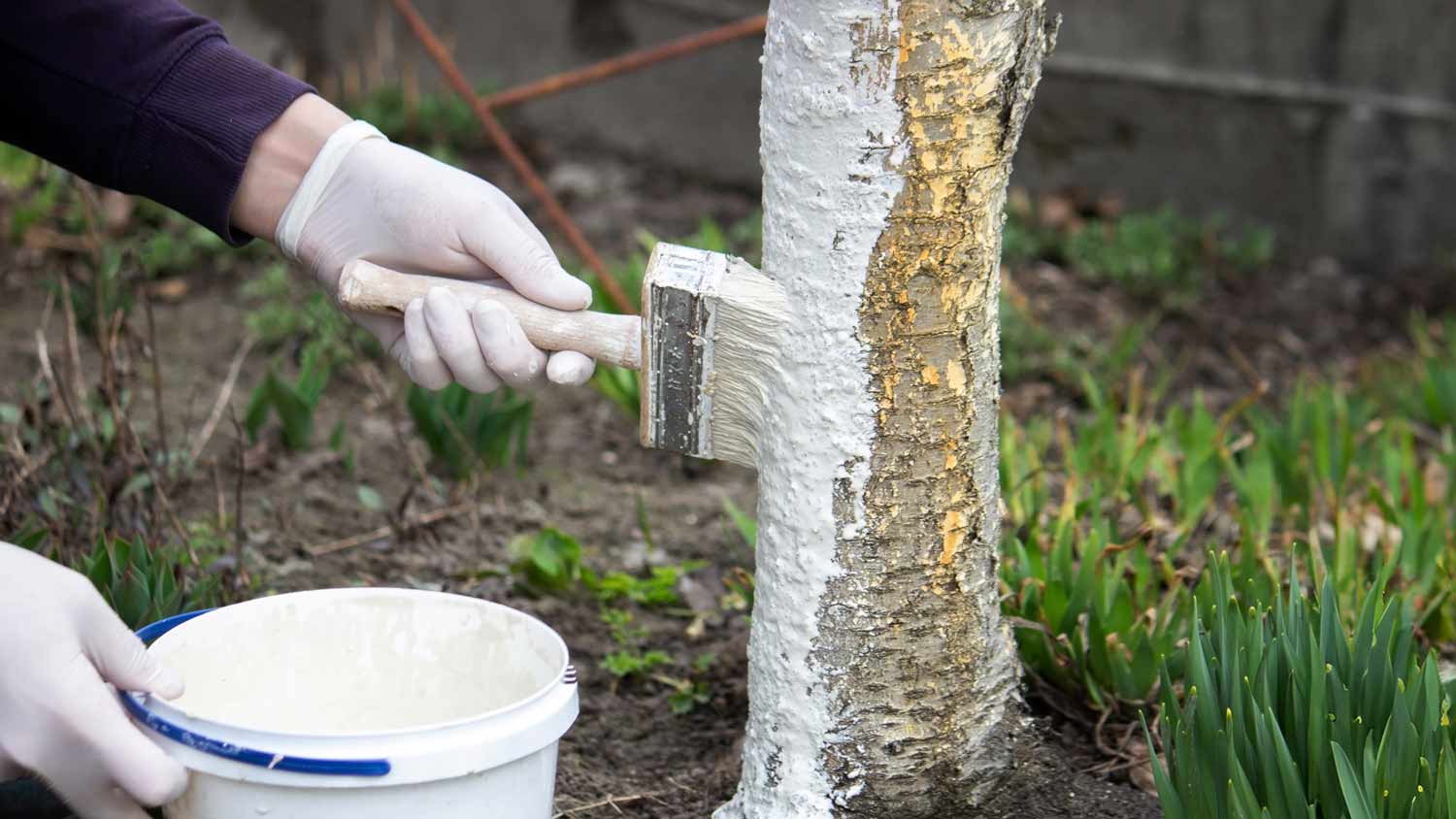
The cost of tree stump removal depends on size, removal method, location, and more. Our guide will show you how much stump removal costs.
Hint: It’s not for the aesthetic


Tree trunks are painted white to prevent sunscald, which causes damage to a tree’s bark.
The white paint helps keep the bark from overheating and splitting.
Thin residential trees and trees in orchards are most commonly painted white.
If you paint your own tree trunks white, use water-based latex paint.
Believe it or not, arborists and tree maintenance specialists alike use paint on trees for a number of reasons. In some cases, it’s to signal that a specific tree is about to be cut down. In other instances, it’s to warn trespassers that they’re on private property. But why are tree trunks painted white? This is typically done to prevent a condition called sunscald and to prepare the tree for a change in seasons. Keep reading to learn more about the procedure and how (and if) to do the same for your trees.

You asked, now here’s your answer: Tree trunks are often painted white to prevent sunscald, which is a condition where extreme fluctuations in temperature cause bark to split. The white paint prevents the wood from overheating and keeps splits or cracks from impacting the tree’s health. White paint is most commonly used on thin residential trees or species in orchards, and you’re most likely to see it in climates that go from extreme cold to extreme heat.
Not all trees require white paint to prevent splits and cracks in the bark. The following types of trees benefit the most from white-painted trunks, as they’re more susceptible to sunscald:
Fruit trees
Birch trees
Pecan trees
Citrus trees
Maple trees

Whether you’re a beginning or experienced DIYer, the good news is you can tackle this project yourself if your trees are at risk of sunscald. You’ll just need to use water-based latex paint in order for it to adhere to a more rough texture. Once a year, take a paintbrush and apply the white paint to the trunk of your tree or trees before the heat of the summer hits. If you’d rather leave this task to the pros, you can consult your local tree maintenance professional to provide a quote.
You may not have to worry about the effects of sunscald if you live in an area where the temperatures don’t fluctuate in a major way. However, the U.S. regions mentioned below can be more susceptible to the condition, so it might be wise to keep your white paint handy.
High-elevation regions, which include parts of Colorado and California, are at risk of sunscald since temperature variations between day and night are significant.
The extreme heat in states such as Texas and Florida can cause stress on tree bark, especially if the trees are exposed to the sun for several hours during the day.
In areas like Illinois, Indiana, and Ohio, winters can be harsh and spring temperatures can fluctuate rapidly, which makes trees more at risk of sunscald.
From average costs to expert advice, get all the answers you need to get your job done.

The cost of tree stump removal depends on size, removal method, location, and more. Our guide will show you how much stump removal costs.
Get transparent shrub removal cost info. Learn average prices, key cost factors, and tips to save on your next shrub removal project.

Trimming your bushes is one of the less costly aspects of landscaping, and it’s helpful to bundle many trimming services together to save money.

An overgrown tree won’t produce a healthy harvest. This guide will show you how to prune an apple tree to get the biggest, healthiest fruit.
Trees add natural beauty and shade to your yard, whether it’s a mighty oak or a fragrant olive tree. Learn how to protect trees during construction in this guide.

A credible tree care company should be licensed, carry insurance, have a certified arborist on staff, and be trained in safe tree removal. Here's what to know.